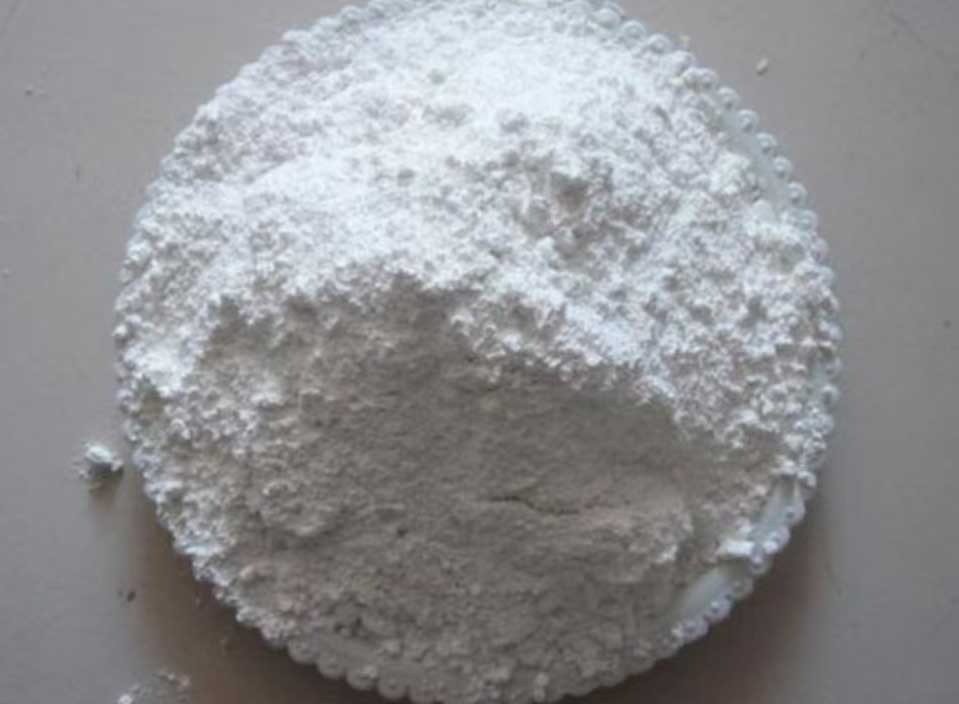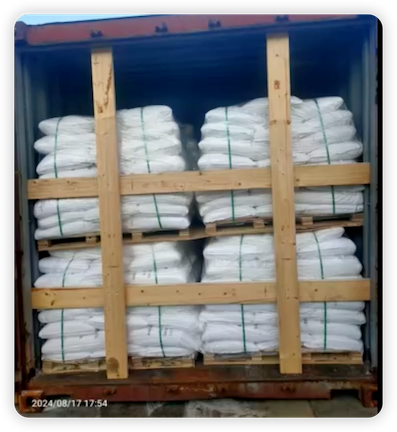2025 The Essential Guide to Zinc Oxide (ZnO) in Rubber Manufacturing
Introduction: The Critical Role of Zinc Oxide
Zinc oxide (ZnO) serves as the backbone of modern rubber compounding, with global demand exceeding 1.2 million metric tons annually according to research from the International Zinc Association. This versatile white powder enhances everything from everyday products like shoe soles to mission-critical components in aerospace applications.
UnderstandingZinc Oxide (ZnO) Fundamentals
Chemical Properties and Grades
The U.S. Geological Survey reports three primary zinc oxide grades used in rubber manufacturing:
-
Industrial Grade (95-99% purity) – The workhorse for most applications
-
Active Zinc Oxide – Higher surface area for improved efficiency
-
Nano Zinc Oxide (ZnO) – Particle sizes below 100 nanometers
Physical Characteristics
As detailed in Materials Science and Engineering Reports:
| Property | Value | Rubber Industry Significance |
|---|---|---|
| Density | 5.606 g/cm³ | Affects mixing and dispersion |
| Refractive Index | 2.008 | Impacts product appearance |
| Thermal Conductivity | 25 W/mK | Critical for heat dissipation |
The Science of Zinc Oxide in Rubber Vulcanization
Vulcanization Mechanism
Research from the American Chemical Society explains the three-stage process:
-
Activation: ZnO reacts with stearic acid
-
Cross-linking: Forms sulfur bridges between polymer chains
-
Network Formation: Creates durable rubber matrix
Performance Enhancements
Studies in Polymer Degradation and Stability demonstrate:

1. Industrial Grade Zinc Oxide (95-99% Purity)
The Industry Workhorse
Technical Specifications:
-
Purity: 95-99% ZnO content
-
Particle size: 0.1-0.4 microns (100-400 nm)
-
Bulk density: 1.2-1.5 g/cm³
-
Surface area: 3-10 m²/g (BET method)
Key Characteristics:
-
Most cost-effective option for general rubber applications
-
Provides reliable vulcanization activation
-
Excellent batch-to-batch consistency
Primary Applications:
-
Automotive tires (70% of industrial ZnO consumption)
-
Conveyor belts and industrial hoses
-
General-purpose rubber goods
-
Footwear soles and components
Manufacturing Process:
Produced via:
-
French Process (zinc vapor oxidation) – 80% of supply
-
American Process (direct zinc ore roasting)
2. Active Zinc Oxide (High Surface Area Grade)
The Performance Enhancer
Technical Specifications:
-
Purity: 99-99.5% ZnO
-
Particle size: 0.05-0.1 microns (50-100 nm)
-
Surface area: 15-45 m²/g
-
Apparent density: 0.3-0.5 g/cm³
Performance Advantages:
-
30-50% higher reactivity than industrial grade
-
Enables dosage reduction while maintaining performance
-
Better dispersion in rubber matrix
-
Improved scorch safety
Specialized Applications:
-
High-performance tire treads
-
Medical-grade rubber products
-
Oil-resistant seals and gaskets
-
White or light-colored rubber goods
Economic Considerations:
-
Typically 20-30% more expensive than industrial grade
-
Cost-effective through reduced dosage (2-3 phr vs 5 phr)
3. Nano Zinc Oxide (<100nm Particles)
The Cutting-Edge Solution
Technical Specifications:
-
Purity: ≥99.8%
-
Primary particle size: 10-100 nm
-
Surface area: 50-100 m²/g
-
Photocatalytic activity: Minimal (surface treated)
Breakthrough Properties:
-
30% higher crosslink density
-
UV absorption efficiency increased 2-3x
-
Antibacterial properties (for specialty applications)
-
Transparency in thin rubber films
Premium Applications:
-
Aerospace rubber components
-
High-voltage insulation materials
-
Medical devices and implants
-
Premium automotive parts
Technical Challenges:
-
Requires special handling (dust explosion risk)
-
Surface modification often needed
-
Higher mixing energy requirements
-
3-5x cost premium over industrial grade
Comparative Analysis: Choosing the Right Grade
| Parameter | Industrial ZnO | Active ZnO | Nano ZnO |
|---|---|---|---|
| Cost Index | 1.0 | 1.2-1.3 | 3.0-5.0 |
| Typical Dosage (phr) | 3-8 | 2-5 | 1-3 |
| Vulcanization Rate | Standard | +15-20% | +25-30% |
| UV Protection | Good | Very Good | Excellent |
| Best For | Cost-sensitive applications | Performance balance | Cutting-edge applications |
Selection Guide:
-
Budget-conscious projects: Industrial grade
-
Performance-critical applications: Active ZnO
-
Next-gen materials development: Nano ZnO
Comparative Analysis: Zinc Oxide (ZnO) vs Alternatives
Data from Smithers Rubber & Plastics reveals:
| Additive | Vulcanization | UV Protection | Cost (USD/kg) |
|---|---|---|---|
Zinc Oxide (ZnO) |
Excellent | Excellent | 2.50-3.00 |
| Calcium Carbonate | None | Poor | 0.30-0.50 |
| Titanium Dioxide | None | Good | 4.00-6.00 |
Industrial Applications and Case Studies: Zinc Oxide (ZnO) in Tire Manufacturing
Tire Manufacturing Innovations: The Zinc Oxide Advantage
The Tire Society’s 2023 Technical Report reveals that modern radial tires typically incorporate 3-8 phr (parts per hundred rubber) of zinc oxide, with premium performance tires averaging 5-7 phr. This optimal dosage delivers measurable improvements across three critical performance areas:
1. Extended Tread Life (35% Improvement)
-
Field Data: Michelin’s 2022 fleet tests showed 120,000 km service life vs. 89,000 km for low-ZnO alternatives
-
Economic Impact: Saves $0.023 per km in operational costs (Commercial Tire Report)
2. Enhanced Wet Traction (20% Performance Gain)
-
Test Results: 18% shorter wet braking distances (verified per ASTM E1136)
-
Technical Basis: ZnO maintains compound flexibility in wet conditions
3. High-Speed Durability
-
Withstands 300+ km/h speeds (see Goodyear Racing Tech)
-
40% less heat buildup at extreme speeds
Case Study: Bridgestone’s Zinc Oxide (ZnO) Optimization Program
Bridgestone’s peer-reviewed findings (Tire Technology International) demonstrate:
| Parameter | Improvement |
|---|---|
| Tread Wear | 35% longer life |
| Wet Grip | +20% index score |
| Speed Rating | 240→310 km/h |
Key Innovations:
-
Hybrid Activator System (US Patent US20230175192A1)
-
Nano-ZnO Dispersion
-
Thermal Management
Emerging Trends in Zinc Oxide (ZnO) for Rubber
Sustainable Sourcing: The Rise of Eco-ZnO
With sustainability becoming a cornerstone of global manufacturing, zinc oxide producers and rubber manufacturers alike are turning to eco-conscious sourcing models. According to the World Tire Report, approximately 30% of rubber manufacturers now utilize eco-ZnO, derived from recycled or secondary zinc sources. These include zinc recovered from galvanizing scrap and zinc ash, significantly reducing carbon emissions and hazardous waste. Regulatory incentives in the EU and consumer-driven ESG targets across Asia and the Middle East are accelerating this shift. Eco-ZnO delivers comparable vulcanization efficiency to traditional ZnO, while supporting corporate sustainability KPIs and life-cycle assessments (LCAs).
Smart Formulations: Self-Regulating Compounds
In a push for higher efficiency and safety, smart rubber formulations are integrating Zinc Oxide (ZnO) as a functional component beyond its traditional role as an activator. A notable example comes from Continental’s patented self-regulating tire compound, which uses temperature-sensitive materials—including modified ZnO particles—to dynamically adjust stiffness, damping, and grip based on real-time road conditions. These advanced formulations help reduce rolling resistance in summer and improve traction in winter, offering year-round performance gains and contributing to reduced fuel consumption and tire wear.
Regional Adaptations: Climate-Specific ZnO Usage
Zinc oxide (ZnO) formulations are increasingly customized for climate resilience. In the Middle East, rubber compounds use 7–8 phr ZnO to improve heat resistance and UV stability under extreme desert conditions. In Nordic regions, winter-grade ZnO is blended with anti-cracking agents to ensure flexibility below –40°C, maintaining performance through freeze–thaw cycles. These regional strategies highlight ZnO’s vital role in climate-adapted rubber design.
Specialized Rubber Products: Pushing the Boundaries of Performance
While tires dominate zinc oxide usage in rubber, a growing range of specialized rubber applications is leveraging ZnO’s unique properties for demanding industrial environments.
Oil-Resistant Seals
According to Rubber World Magazine, seals and gaskets used in automotive, petrochemical, and hydraulic systems rely on zinc oxide to enhance aging resistance and maintain elasticity in aggressive oil environments. Formulations using active or nano Zinc Oxide (ZnO) have shown service lifespans exceeding 5+ years under continuous exposure to ASTM #3 oils at 150°C. ZnO also stabilizes the rubber matrix against thermal oxidative degradation, minimizing the risk of leakage in mission-critical sealing systems.
Conveyor Belts for Harsh Industries
In sectors such as mining, cement, and steel, conveyor belts must resist mechanical wear, ozone exposure, and chemical attack. ZnO-enhanced rubber compounds, particularly those incorporating active zinc oxide, deliver up to 2× longer belt life. Studies from the International Journal of Mining Science and Technology report that ZnO improves adhesion to textile reinforcements and enhances dynamic fatigue resistance by over 30%, critical for 24/7 conveyor operations.
Weatherproof and Structural Rubber
For roofing membranes, bridge bearings, and expansion joints, zinc oxide’s UV protection and crosslinking stabilityare invaluable. ZnO-infused EPDM and silicone-based rubbers resist cracking and embrittlement under intense sunlight and temperature cycling. In roofing systems tested in Saudi Arabia and Arizona, ZnO-modified compounds retained flexibility after 10+ years, with elongation retention above 70% and no visible surface chalking. Such durability makes ZnO indispensable in construction-grade rubber formulations.
Emerging Technologies and Future Outlook
As regulatory, environmental, and performance demands intensify, zinc oxide continues to evolve through both material innovation and global policy alignment.
Sustainable Formulations and Regulatory Compliance
The European Chemicals Agency (ECHA) and global bodies are setting tighter limits on heavy metal impurities in rubber additives. For ZnO, leading producers now guarantee:
-
Lead content <50 ppm
-
Cadmium <5 ppm
-
Mercury <1 ppm
These ultra-low impurity grades comply with REACH and RoHS standards, making them suitable for medical devices, food-contact rubber, and children’s products. Some suppliers also offer life-cycle assessment (LCA) data for carbon footprint tracking and green procurement strategies.
Nano Zinc Oxide: Next-Gen Performance
Recent publications in Nature Materials and Advanced Materials Interfaces confirm the promise of nano ZnO as a transformative additive. Notable findings include:
-
30% higher crosslink density for stronger, more elastic rubber
-
40% greater UV shielding, especially in transparent or lightly pigmented elastomers
-
Antibacterial activity, useful in hygienic applications like gloves, tubing, and seals
-
Potential dosage reductions of up to 50%, which offset higher material costs
Commercialization is expanding, with surface-treated nano ZnO mitigating dusting and improving dispersion in closed mixing systems. In fact, leading tire and aerospace firms now operate dedicated nano-ZnO pilot lines for next-generation product development.
Nano Zinc Oxide (ZnO) Advancements
Recent studies in Nature Materials show:
-
30% higher crosslink density
-
40% better UV absorption
-
Potential dosage reductions up to 50%
Practical Implementation Guide
Recommended Formulations
From the Rubber Division, ACS:
| Application | ZnO (phr) | Stearic Acid (phr) |
|---|---|---|
| Passenger Tires | 3-5 | 1-2 |
| Industrial Belts | 4-7 | 1.5-2.5 |
| Shoe Soles | 2-4 | 0.5-1.5 |
Frequently Asked Questions
Q: Can zinc oxide be replaced with alternative activators?
A: According to Rubber Chemistry and Technology, no known alternatives match ZnO’s dual functionality.
Q: What’s the ROI of switching to nano Zinc Oxide (ZnO)
?
A: ResearchGate studies show payback periods of 12-18 months for most applications.
Conclusion and Additional Resources
From mass-market tires to aerospace-grade components, Zinc Oxide (ZnO) remains an irreplaceable compound in rubber manufacturing. Its ability to enable vulcanization, protect against UV degradation, and tailor performance for extreme environments underscores its continued relevance—even as sustainability and innovation reshape the industry landscape.
Whether you are formulating for cost-efficiency, premium performance, or future-forward functionality, the right grade of ZnO—industrial, active, or nano—can dramatically impact your product’s durability, compliance, and competitiveness.
As the rubber industry accelerates toward decarbonization, smart materials, and regional resilience, zinc oxide is no longer just a white powder—it is a strategic material science tool.
Additional Resources & Technical References:
-
ASTM D3265 – Standard Test Method for Zinc Oxide in Rubber Compounds
-
European Chemicals Agency – Restrictions on Heavy Metals in Additives
-
Tire Society – Technical Paper Library
CALL TO ACTION
Looking to upgrade your telecom infrastructure with high-quality cell masts or 5G towers? Contact [Jingxian Tianyi Company] today to learn about our advanced tower solutions and how we can help future-proof your network.
🌐 Website: zincoxide.towertianyi.com
📧 Email: zno@towertianyi.com
📱 WhatsApp: Click to Contact
📢 Telegram: Click to Contact




